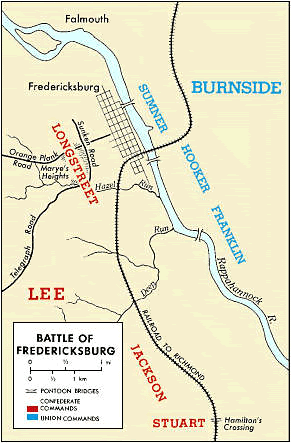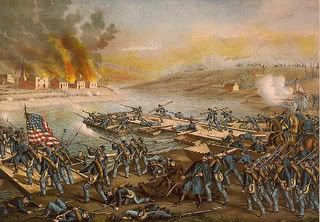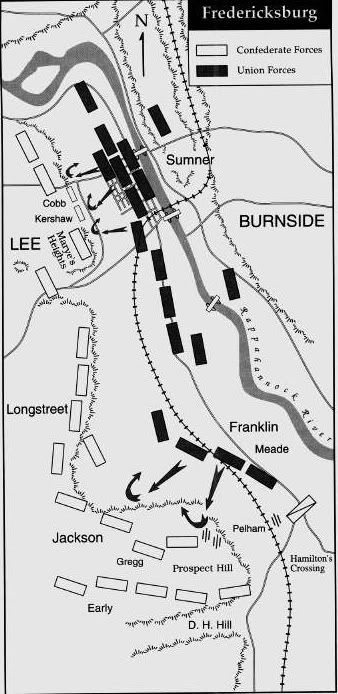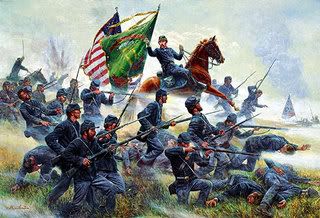I would like to take a departure from my usual discussion of military issues and discuss the matter of preventing a return to war when the current conflict ends. This task is of critical importance to the future of Sri Lanka, and I feel it must be addressed before the current fighting is concluded.
With Sri Lankan soldiers pouring into the Wanni from all directions, the LTTE is facing extinction. While the war is far from over, plans must be made on how to deal with the population of the separatist heartland once the LTTE has been eliminated as a conventional fighting force. A plan for reconstruction and reconciliation is vital to the success of whatever peace follows this terrible conflict. The most pressing issue of the postwar reconstruction will be the question of what to do with LTTE military veterans, political figures, and any other Tamils who actively supported the rebel group during the war. This challenge may be as daunting as defeating the LTTE in the first place, and will define what kind of country Sri Lanka will be for the rest of its existence.
An understanding of history will only serve to help Sri Lankans develop solutions for this problem. Two excellent examples are the period of reconstruction following the American Civil War and the German process of denazification after the end of World War Two. It is from this later example that I have derived the name, “detigerfication” to describe the task facing Sri Lanka. Through these examples we can see three primary issues regarding enemy veterans. First, the war crimes trials of Nazis at Nuremberg should be studied as Sri Lanka forms a judicial task force to bring to justice members of the LTTE accused of war crimes. Second, the treatment and legal status that former Nazis and Confederates faced in their respective countries should be examined and an appropriate system developed for Sri Lanka. Finally, the way the United States and Germany dealt with the cultural aspects of their conflicts offer insight into Sri Lanka’s cultural future.
Nazi war criminals standing trial in the first row
The Nuremberg Trials following World War Two tried and convicted many Nazis, executing some and imprisoning others, for war crimes committed against enemy civilian populations, as well as their own citizens during the war. Sri Lanka will undoubtedly have some such special judicial organization established to deal with LTTE war criminals, and most Sri Lankans would probably cheer at the thought of Velupillai Prabhakaran being tried and hung for his role in numerous LTTE atrocities.
However, while Sri Lanka should enter into this judicial operation with the hope of bringing war criminals to justice, effort should be made to avoid punishing individuals solely for being members of the LTTE, or being members of s certain rank. Rebels who ordered or participated in war crimes should be hunted down, regardless of their rank. If there is not enough credible evidence to indict a surrendered LTTE officer of a war crime, even if it is a high-ranking colonel, then he should be allowed to live out his life in peace. If a conscript is suspected of killing civilians, then they should be tried and punished if convicted.
For example, if a rebel is known to have been present at the Battle of Mullativu, he is simply a war veteran. If he is also known to have participated in the murder of surrendered Sri Lankan soldiers after the base fell, he should then be prosecuted to the fullest extent of the law. It is of utmost importance that the postwar trials be an exercise in justice, not a witch hunt. To achieve this, the government should declare a general amnesty to all members of the LTTE with the condition that this does not absolve them from being guilty of any of war crimes. This partial amnesty will not excuse the actions of war criminals, but will ensure that tens of thousands of Tamils who acted in good conscience during the war will not be persecuted by a court of vengeance.
The question of what to do with LTTE veterans goes beyond prosecuting those suspected of war crimes. There is also a matter of their political and economic future. In postwar Germany, the Allied Powers clamped down on former Nazis both as a means of preventing the Nazi Party’s survival after the war and as a means of retribution against the world’s most hated political group. Regardless of their education or skill, the only legal jobs former Nazi Party members could have in Europe were manual labor jobs. The two highest (out of four) classes of offenders were also banned from voting and running for public office. American general George Patton was fired from his postwar position in Germany because of his opposition to this system. He argued that most Nazi Party members had not committed war crimes and were the most, if not the only, Germans qualified to work in government positions. This was only one aspect of a collective punishment system where the Allies blamed all Germans for the war and the Holocaust. Nazi literature, symbols, and other objects reminding Germans of the Nazi Party were also destroyed in an attempt to totally erase Nazism from German society.
Sri Lanka should think twice before taking such a hardliner’s stance on reconstruction. Unlike Germany after World War Two, Tamils in Sri Lanka are unlikely to adopt an intense guilt complex because there is no event, like the Holocaust, that clearly marks their bid for independence as evil. Many will argue that both sides committed war crimes, leaving only political perspective to decide who, if anyone, was fighting on the side of righteousness. The result will be that a great many Tamils will be proud of their LTTE heritage and will continue to support the ideals they fought for, even if Tamil Eelam will never come to pass. Will Sri Lanka deny voting rights to a huge portion of Sri Lankan Tamils because of this? Will these same Tamils be limited by the government to the least prestigious jobs in the country? Fortunately, the liberation of The East is proving Sri Lanka’s willingness to include former enemies in the government. The once ludicrous idea of Colonel Karuna, the rebel leader who led the final assault on Elephant Pass, becoming a member of the Sri Lankan government is now a reality. Successful elections in the East give further hope that Reconstruction in the North will be a successful exercise in democracy.
It is of vital importance that the people in the Wanni do not suffer from large unemployment rates. Poor individuals who cannot find lawful employment will be vulnerable to recruitment by guerillas, especially if they have families to feed. The same risk applies to children. The education system must be reestablished as soon as possible, once the major fighting has ended. Special attention should be given towards helping child veterans adjust to civilian life and assisting them in getting an education. The transition from military to civilian life is difficult for people of any age, but will be even harder for the thousands of child soldiers who will survive the war.
Sri Lanka might do well to consider a policy closer to the reconstruction process in America in this regard, though this example also has aspects that should be avoided. President Andrew Johnson, who took the presidency following the death of President Abraham Lincoln, declared a general amnesty for all Southern citizens who took an oath of allegiance to the United States. This option to have a full return to citizenship in return for, what was basically a promise to not wage war against the state, greatly helped reduce the level of partisan violence during Reconstruction. However, the exclusion of Confederate officers, political officials, and wealthy landowners from this amnesty has a counter effect, intensifying Southern hatred for the Union and Northern citizens. This hatred was furthered by the passing of the 14th Amendment, which stated that no rebel or supporter of the Confederacy could be elected to public office.
This general amnesty, as already stated, is of critical importance as it offers a future to the tens of thousands of Tamils who acted honorably during their participation in the war. Establishing a means for people to appeal their exclusion from the amnesty also has merit, as there will always be flaws in large-scale policies. Not only is this a fair and just move, but also an act to ensure a lasting peace. By allowing tens of thousands of former rebels the option to have civilian lives with full rights and no threat of legal or military retribution, they will be much more likely to accept reunification.
While the persecution of landowners in the American South hardly applies to Sri Lanka, there are other, more relevant, aspects of Southern Reconstruction that Sri Lanka would do well to avoid or modify. Sri Lanka should be able to make the distinction between top tier LTTE leaders and LTTE public servants who are the only people with any administrative experience in the region. Banning what amounted to nearly every known public figure in The South created long lasting bitter sentiments in the former Confederacy and the same would likely be true in the Wanni. Sri Lanka should recognize, just as Patton did in Germany, the need for experienced political workers who have had an existing relationship with the local population. Imposing an appointed government from Colombo or forcing Tamils to pick representatives from a tiny pool of pre-approved individuals will do little more than help the LTTE remnants recruit people for guerilla action. There is also the threat of showing favor towards Eastern Tamils over their Northern kin. Former rebels dominate government in the East and Northern Tamils should be given similar accommodations. Granted the East is being run by defectors, while the North would be run by surrendered, but loyal rebels, however, showing favor towards Eastern Tamils will encourage Northern Tamils to continue the war as partisans. As long as Sri Lankan Tamils, or certain groups of Tamils, feel that the rest of the island is subjugating them, there will always be people willing to plant bombs and assassinate politicians.
Americans from The South are famous for taking the Confederate flag into battle in every war after the Civil War ended. Here, Southern soldiers carry the flag into battle during the Vietnam War.
The Sri Lankan Civil War is a culturally defining event that will not simply go away with the fall of the LTTE. Tens of thousands of LTTE veterans and their families will make up a large portion of every Tamil community, and a great many will view them as heroic fighters of a lost cause. The simple fact of the matter is that the LTTE’s goal of a separate state enjoyed wide support from the Tamil people, and that will not change with the end of the war. Sri Lankans must choose between accepting this new aspect of Tamil culture, or fighting it at every turn in an attempt to eradicate it from society.
To put the decision in a different light, Sri Lankans must choose between two futures for their country. They can ban the Tiger flag and Tiger uniforms, outlaw the construction of historical monuments and museums to the rebel cause, and discourage Tamil communities from celebrating Hero’s Day. This will certainly make several non-Tamil Sri Lankans feel better, since the last thing they want is for the LTTE to have remembrance shrines on the land so many loyal Sri Lankans gave their lives to liberate. The drawbacks, however, would be a continued, possibly intensified, feeling of persecution among Sri Lankan Tamils and their permanent hatred of the rest of Sri Lanka for being forced to forsake their fallen loved ones. Given the fragile nature of the post LTTE peace, it would likely be a key factor in a return to war.
Alternatively, Sri Lankans can accept this new aspect of Tamil culture as a natural result of having fought so long and hard, both for their cause and for the more instinctual desire to protect their homes and families. After all, the reasons wars are fought and the reasons people fight wars are often very different. An example the late American Civil War historian Shelby Foote once mentioned that fits very well with the Sri Lankan conflict involved a conversation between a Union soldier and a captured Confederate. The Union man asked why the Confederate was fighting, to which the he replied, “Because you’re down here.” With this example in mind, it’s easy to see how the average fighting man often does not risk his life for the grand political goals of nations and empires, but to protect home and hearth.
Tolerating Tamil pride for the struggle and sacrifices that people from every Tamil community have participated in does not legitimize the LTTE, but instead acts as the extension of an olive branch. Sri Lanka, by allowing Tamils to honor and remember their fallen loved ones, will send the message that all those lost in this war, even those who carried arms against the state, make up a national tragedy that must never be forgotten. While this will almost certainly result in the symbolism of the LTTE becoming forever entrenched in Sri Lankan Tamil culture, it does not mean that Tamil separatism will forever flourish, and indeed it may help restore Tamil pride in Sri Lanka in a matter of decades instead of a matter of centuries.
Confederates in Afghanistan
This can certainly be seen in American culture. The American South made the transition from separatism to patriotism, despite holding fierce pride for their rebel heritage, all while Civil War veterans were still alive. Southerners now make up the majority of the American Armed forces and have taken Confederate flags to war with them in every conflict since the Civil War. A confederate flag flew over Shuri Castle in the Battle of Okinawa during World War two, was as common as the American flag in Vietnam, and has flown over Iraq in two wars now. In Korea, North Koreans and Chinese troops were baffled by the Confederate flag and continually failed to determine what UN member nation the flag represented.
I can only hope Sri Lanka will have the good fortune of having Tamil soldiers hide Tiger flags in their helmets while risking their lives for a united Sri Lanka fifty years from now. To achieve this same combination of nationalism and pride in one’s heritage in Sri Lanka would be remarkable. Without a doubt it can be done. The only question is whether or not the rest of Sri Lanka is willing to truly bury the hatchet when the shooting stops.
As a closing thought, I’d like to share a famous quote by President Lincoln, in the hopes that the attitude he expressed will prevail in Sri Lanka:
“With malice toward none; with charity for all; with firmness in the right, as God gives us to see the right, let us strive on to finish the work we are in; to bind up the nation's wounds; to care for him who shall have borne the battle, and for his widow, and his orphan—to do all which may achieve and cherish, a just and a lasting peace, among ourselves, and with all nations.”
— President Abraham Lincoln



























